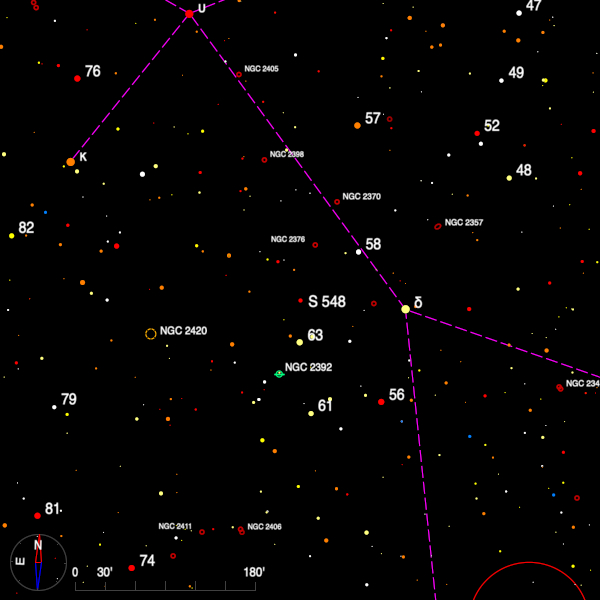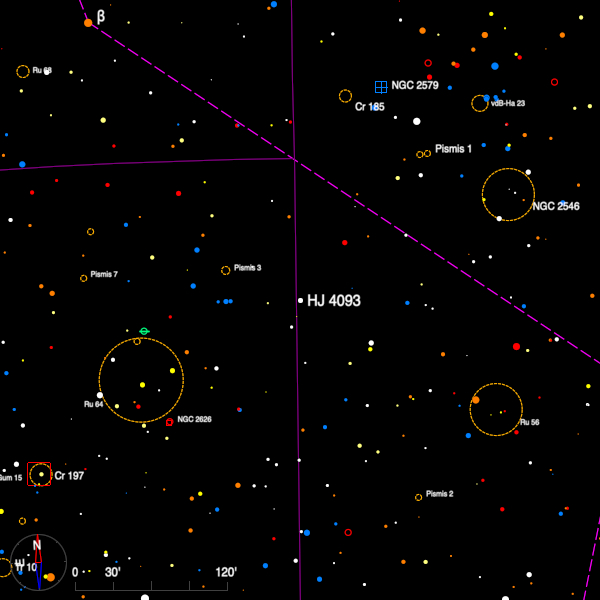February 2024 - Double Star of the Month
S 548 (07 27 40.54 +22 08 29.3) was noted by William Herschel in 1782 and catalogued by him as H V 66. He noted that the stars were very unequal and the larger one was pale red and the smaller one was dusky. The distance was noted as 34" 39'". Little has changed in the relative positions since then with the Washington Double Star catalog (WDS) giving 277 degrees and 35".3 for 2019.

The pair can be found two degrees following delta Gem (see this column for Feb 13). The catalogue magnitudes are 7.0 and 8.9. In 1892 Thomas Espin added a faint companion of magnitude 12.4 at 24 degrees and 11".9. The three stars are unrelated. A lies 1800 light-years away, B is 940 and C is 8350 light-years distant.
In southern Puppis right on the border with Vela is HJ 4093 (08 26 17.74 -39 03 32.3). This is a fine pair for the small aperture, it is triple in apertures of 40-cm or more, whilst the spectrograph reveals that component A is an Algol system called NO Pup.

Stars A and B (magnitudes 6.5 and 7.1) are currently at PA 122 degrees and 15".0 having almost doubled their separation since discovery by John Herschel. Using the 26.5-inch refractor at Johannesburg, Willem van den Bos found that B is a close double (Ba,Bb), with stars of magnitude 7.9 and 8.1, currently 0".2 apart and a binary with a period of 103 years. In addition the WDS notes that Andrei Tokovinin finds a close component (D) only 5".4 from A but with a K magnitude of 17.3, but this star does not appear in the Multiple Star Catalogue.
Examining Gaia DR3 with a field of radius 100" shows two stars of magnitudes 12.2 and 13.1 respectively 64" and 66" from A which share the same parallax, so perhaps this is a small cluster. There is, however, no data for the B component and the significant change in the AB distance since discovery may indicate that B is unrelated.
Bob Argyle - Double Star Section Director